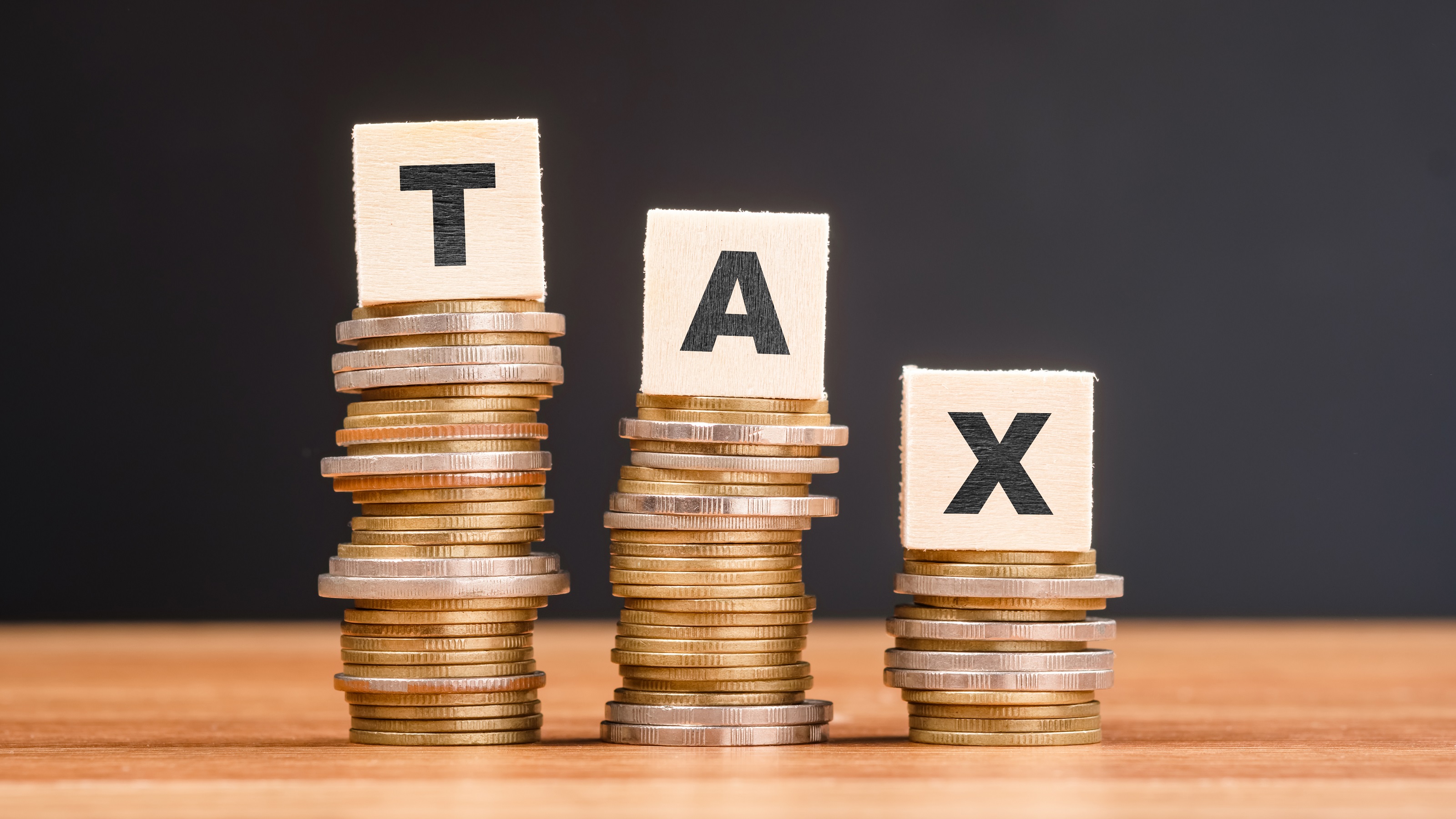3 Ways to Pay Less Taxes in 2023
Using brokerage accounts as collateral, investing in a Roth IRA and opening an HSA account are all ways to ease your tax burden and boost savings in the new year.

By reducing your tax burden, you can lower the amount of money you send to the IRS this year… and redirect those dollars to your own savings or spending goals. These three strategies are worth considering if you want to pay less taxes (legally!) in 2023.

1. Create Liquidity From Your Investments.
Individual investment accounts, or brokerage accounts, are great vehicles to use on your journey to building wealth. Unlike qualified retirement accounts, like 401(k)s or IRAs, brokerage accounts don’t come with stipulations or rules about how or when you can access your assets. In theory, that money is yours anytime for any reason (although, in practice, you probably don’t want to dip in and out of the account and therefore unnecessarily interrupt the compounding process of that money in the market).
The cost of that freedom and flexibility? Taxes. Brokerage accounts receive no special tax treatments like qualified retirement accounts. You contribute after-tax money, and if and when you need to liquidate assets from the account, any gains will be subject to short- or long-term capital gains taxes.
Unless you consider this strategy: Instead of liquidating assets in your brokerage account, which can trigger a taxable event, use your assets as collateral to get a line of credit.
Depending on the bank or custodian you use, you can use cash in a bank account or assets in a brokerage account as collateral against a line of credit. If you needed cash quickly, you could then use the line of credit rather than selling out of positions within your investment portfolio to generate that cash and potentially rack up a bigger tax bill. This also provides you with the benefit of allowing your invested assets to stay invested while you use the cash from the line of credit for other purposes.
Of course, this isn’t just free money. The line of credit will come with an interest rate, which can be variable or fixed, and you need to repay whatever you borrow against it plus that interest. This is why, when we discuss this strategy with our financial planning clients, we frame it as a “just in case” option or a safety net.
The line of credit is there if you need it… but that doesn’t necessarily mean it’s a good idea to rely on it or to plan to use it heavily. If you’re trying to pay for a known purchase or goal, it’s better to plan ahead and use other means (like saving up for it in cash over a period of time) to finance the purchase rather than increasing your costs via interest payments.
The ability to do this will depend on your financial institution, your account balances and your credit history. Not all custodians will offer this to retail investors, either; you may need to go through an institutional custodian (which might mean working with a financial adviser to do so).

2. Get Around Income Limits — or Avoid Income Taxes Entirely.
A Roth IRA is a great investment tool to use to help reduce your tax burden in the future. The money you contribute to the account can grow tax-free, and you may not have to pay taxes on your earnings. (This assumes you stick to the rules: You make your withdrawals after age 59½, and the Roth has been open for at least five years.)
Sounds great, right? Here’s the catch: You might make too much money to contribute to the Roth. At least, you might make too much to contribute directly.
This is where backdoor Roth conversions come in. This strategy lets you contribute money to an IRA and then roll that retirement money from the IRA’s pre-tax bucket to the Roth’s after-tax bucket. This can dramatically reduce your tax burden in retirement when it’s time to use the money that you’ve saved.
While getting around the income limits for contributing to a Roth IRA is possible, you still have an income that you have to report … unless you live in a state with no income taxes.
While uprooting to a no-income-tax state might be a stretch for some people, the fact that you can skip out on state income taxes is a real consideration if you’re already contemplating a move. It’s not a reason to move on its own, but it could tip the scales in favor of one state over another.
And here’s a bonus tax-saving tip: If you plan to buy a home, make sure you live in your new residence for two of the last five years to benefit from the capital gain tax exemption.

3. Grow Tax-Free Wealth With an HSA.
There’s no such thing as a free lunch… with possibly one exception when it comes to tax-free money. Health savings accounts, or HSAs, are the only kind of investment account that provide a triple-tax advantage:
- Your contributions to the account could be tax-deductible and are tax-free.
- Any growth within the account is tax-free.
- Withdrawals on qualified medical expenses are tax-free.
While some people use their HSA on an ongoing basis, that likely only allows you to take advantage of the first and third tax advantages. If you contribute cash and then use that cash for qualified medical expenses, you don’t give your money a chance to grow.
If you want to leverage an HSA to its fullest potential, you need to make sure your contributions are invested — and, ideally, they stay invested for as long as possible. What we often recommend to clients with HSAs is to:
- Make the maximum contribution to the HSA each year.
- Invest the contributions and leave them invested.
- Pay for medical costs out of pocket during your working and earning years
- Enjoy what amounts to a “medical IRA” in retirement, when your health care costs are likely going to be much higher than they are today (and remember that you can use HSA money to pay for Medicare Parts B, C and D premiums as well as LTC insurance and normal qualified medical expenses).
Like everything else, this strategy doesn’t work for everyone. It’s worth considering if you are young, healthy and do not usually incur lots of medical costs. But if you use medical services frequently or have a lot of high-cost prescriptions, for example, this might not be the best option.
For one, it could be financially better to actually use your HSA to help manage those costs year-to-year. Two, it might also mean you shouldn’t have an HSA to begin with, because you can only use an HSA if you have a high-deductible health plan (or HDHP). That might not make sense if you’re going to the doctor frequently or often incur lots of medical bills each year.
As with most things in financial planning, the ultimate answer on “does this strategy work for me?” will always be “it depends.” But it’s worth exploring your options to see how you can maximize your wealth — while minimizing how much of it has to go to the IRS.
--
This article was written by and presents the views of our contributing adviser, not the Kiplinger editorial staff. You can check adviser records with the SEC or with FINRA.
Get Kiplinger Today newsletter — free
Profit and prosper with the best of Kiplinger's advice on investing, taxes, retirement, personal finance and much more. Delivered daily. Enter your email in the box and click Sign Me Up.

Eric Roberge, CFP®, is the founder of Beyond Your Hammock, a financial planning firm working in Boston, Massachusetts and virtually across the country. BYH specializes in helping professionals in their 30s and 40s use their money as a tool to enjoy life today while planning responsibly for tomorrow. Eric has been named one of Investopedia's Top 100 most influential financial advisers since 2017 and is a member of Investment News' 40 Under 40 class of 2016 and Think Advisor's Luminaries class of 2021.
-
 Sam's Club Plans Aggressive Expansion: Discover Its New Locations
Sam's Club Plans Aggressive Expansion: Discover Its New LocationsSam's Club expansion plans will open up to 15 new stores each year. Learn where they plan to open in 2025.
By Sean Jackson Published
-
 What Is the Buffett Indicator?
What Is the Buffett Indicator?"It is better to be roughly right than precisely wrong," writes Carveth Read in "Logic: Deductive and Inductive." That's the premise of the Buffett Indicator.
By Charles Lewis Sizemore, CFA Published
-
 How Baby Boomers and Gen Xers Are Redefining Retirement Living
How Baby Boomers and Gen Xers Are Redefining Retirement LivingBoth generations need to embrace change and leverage real estate as a dynamic asset in their retirement planning. Here's how financial advisers can help, too.
By David Conti, CPRC Published
-
 How Good Advisers Manage Risk in Challenging Markets
How Good Advisers Manage Risk in Challenging MarketsThey understand the difference between what might be real challenges to an investor's strategy and fear brought on by market volatility.
By Ryan L. Kirk, CFA® Published
-
 Financial Planning's Paradox: Balancing Riches and True Wealth
Financial Planning's Paradox: Balancing Riches and True WealthWhile enough money is important for financial security, it does not guarantee fulfillment. How can retirees and financial advisers keep their eye on the ball?
By Richard P. Himmer, PhD Published
-
 A Confident Retirement Starts With These Four Strategies
A Confident Retirement Starts With These Four StrategiesWork your way around income gaps, tax gaffes and Social Security insecurity with some thoughtful planning and analysis.
By Nick Bare, CFP® Published
-
 Should You Still Wait Until 70 to Claim Social Security?
Should You Still Wait Until 70 to Claim Social Security?Delaying Social Security until age 70 will increase your benefits. But with shortages ahead, and talk of cuts, is there a case for claiming sooner?
By Evan T. Beach, CFP®, AWMA® Published
-
 Retirement Planning for Couples: How to Plan to Be So Happy Together
Retirement Planning for Couples: How to Plan to Be So Happy TogetherPlanning for retirement as a couple is a team sport that takes open communication, thoughtful planning and a solid financial strategy.
By Andrew Rosen, CFP®, CEP Published
-
 Market Turmoil: What History Tells Us About Current Volatility
Market Turmoil: What History Tells Us About Current VolatilityThis up-and-down uncertainty is nerve-racking, but a look back at previous downturns shows that the markets are resilient. Here's how to ride out the turmoil.
By Michael Aloi, CFP® Published
-
 Could You Retire at 59½? Five Considerations
Could You Retire at 59½? Five ConsiderationsWhile some people think they should wait until they're 65 or older to retire, retiring at 59½ could be one of the best decisions for your quality of life.
By Joe F. Schmitz Jr., CFP®, ChFC® Published
